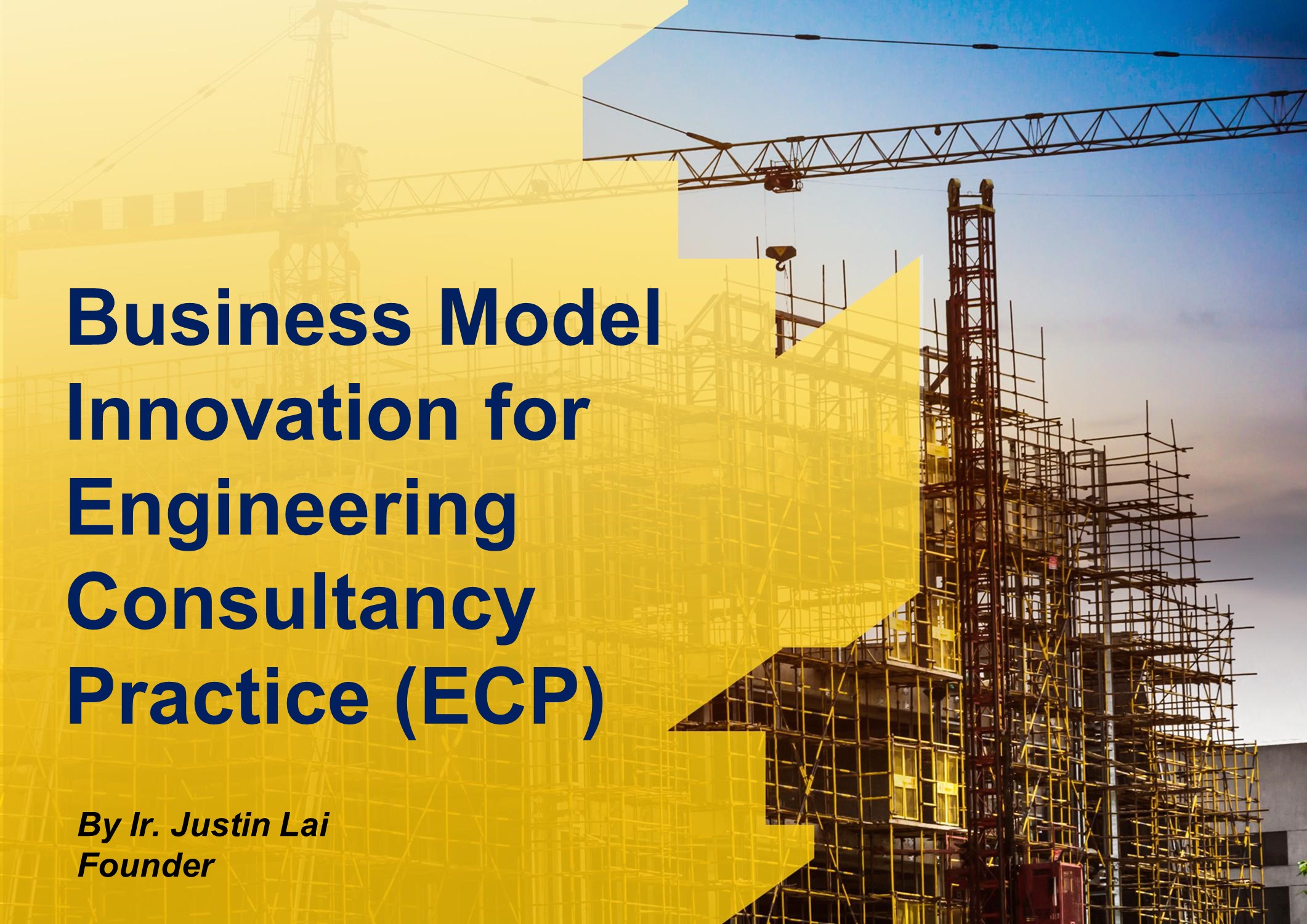Author: Ir. Justin Lai Woon Fatt
The Malaysian government has highlighted liberalization of 17 service sub-sectors in phases, including architectural and engineering services. It encourages more participation in a market to create a competitive environment while does not eliminate government regulations. Liberalization offers opportunities for transfer of capital, expertise, and technology to domestic firms to expand the business to other countries in South East Asia. Consequently, many foreign companies will set up consultancy businesses in Malaysia. Local Engineering Consultancy Practices will soon face the pressure of a highly competitive environment whereby foreign firms may provide better services with a lower price. Thus, local firms need to improve their competitiveness in order to sustain in the industry. And how do they do that? This is why we need to design and implement a sustainable business model.
What is a sustainable business model? Alexander Osterwalder has developed a Business Model Canvas describing nine (9) essential components to form a sustainable business model. And a customised business model to suit to IPM’s business nature was designed and implemented. Below are the components of IPM’s Business Model:
- Customer Segment
Ordinary ECP deals with project owners. Project owners comprise of property developers, designs and build contractors, and end users. Besides project owners, IPM is also doing business with local and international franchisees. As of today, IPM is the first and only ECP granted with franchise license by the Malaysian government. The franchise business is a win-win situation for both IPM and franchisees; whereby franchisees receive assistance and guidance to develop their own ECP businesses, while IPM receives royalty as remuneration. - Value Proposition
What are the unique values that IPM has committed to deliver to the customers? IPM provides one stop services to our customers to reduce the hassle of dealing with different consultants. IPM is associated with various experts in the industry with the purpose to enhance capacity and scope of services. With that, customers do not need to look for different specialists to deal with their every special need. All they need to do is to contact IPM.Many young engineers wish to startup their own ECP business but they might be worried about their ability in dealing with the non-technical matters such as local authorities submission, human resources, administrative, accounts, and finance management, marketing and business development. Besides, building portfolio to gain customer’s confidence is a great challenge for start-up company too. Hence, IPM’s franchise creates lower entry barrier for young engineers while enlightens them on their entrepreneurial journey. - Channel
How IPM links with target customers? The in-house developed IPM Fastic Portal serves the purpose as a communication medium for customers, consultants, and contractors. With this platform, customers are able to access to the design and submission status anytime, anywhere. Website and social media were also developed to deliver information effectively to our stakeholders. - Customer Relationship
How to make customers feel good? First things first, solve all their problems. Therefore, it is important to have a good system to manage design, submission matters, project monitoring, and project delivering. IPM Fastic Portal was developed to handle all of the above mentioned. Construction management application is the next in line to be developed to ease construction management. - Profit Model
Ordinary ECP makes money by charging professional fees for their services. Apart from the traditional way, IPM has royalty income from franchisees. The more franchisees gain, the more we gain. - Key Partners
It is often easier to succeed when we can easily work together with others. IPM focuses on our core competencies as well as recruiting associates from different expertise. By tapping into the sharing economy, IPM is able to enhance services capacity and variety. IPM is also associated with the foreign architectural and engineering firms in China, India, and other ASEAN countries. IPM collaborates with real estate companies, IT companies, financial companies, universities, etc. to run special projects that are beneficial to stakeholders in the related industries. These collaborations create synergism effect that will always create a greater impact on the community. - Key Resources
IPM Fastic Portal allows staffs and associated professionals to work anytime, anywhere. Outsourcing, submission statuses, design checking, performance review, resources planning, and payment can be done on this platform. - Key Activities
Ordinary ECP often focuses on designing, attending meetings, and dealing with local authorities. IPM focuses on recruiting professionals, cross industry collaborations, promote IPM franchise, corporate branding development, and system development. - Cost Structure
Construction industry always suffers a huge impact during economy downturn. ECP often faces difficulties in collecting payment and consequently causing cash flow problem. Sharing economy allows IPM to turn fixed cost (permanent staffs’ salary) into variable cost by establishing partnership with other professionals.
“The difference between market takers and market makers is not product innovation,
it is business model innovation” – Vala Afshar
Renowned companies like Kodak, BlackBerry and Borders failed because their business models did not evolve with time. No matter ECP or other businesses, business owners shall constantly be alert of the latest trend and ensure organisational changes are made in time before the company slumps into crisis. Hence, local ECP shall start taking initiative to innovate their very own business model to sustain in the liberalised market before it is too late.
Ir. Justin Lai
Founder
IPM Group

